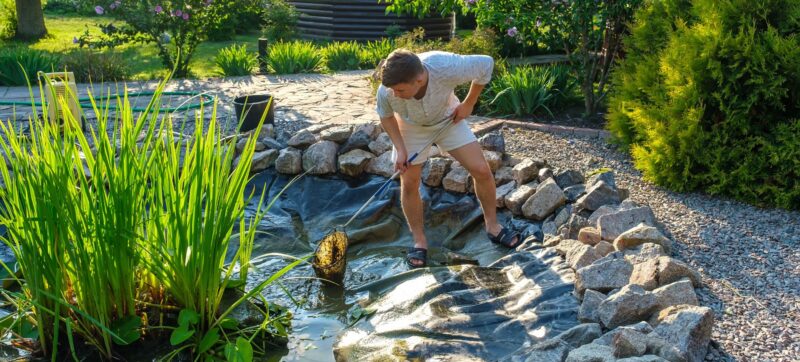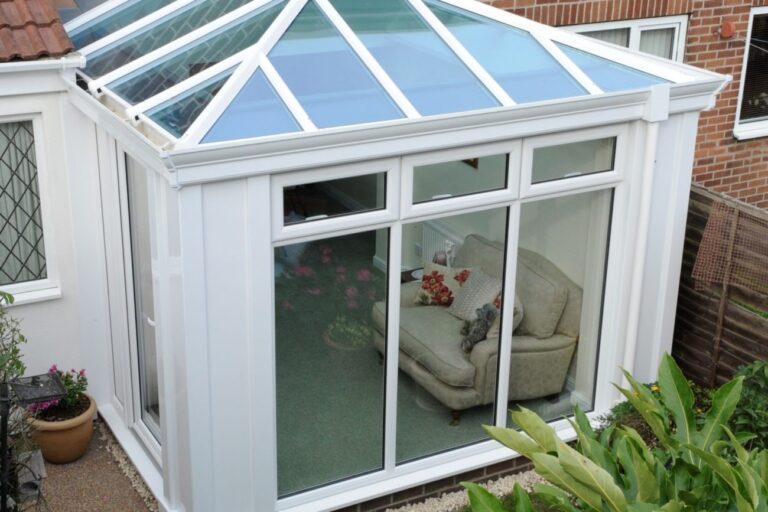Creating a pond that thrives takes dedication, but it’s worth the effort. Ponds are living systems that rely on balanced care to keep fish, plants, and water in harmony. Without regular maintenance, your tranquil water feature can quickly turn into a murky mess. Let’s explore the most effective ways to maintain your pond while keeping it an enjoyable part of your landscape.
Key Points:
- Cleaning prevents debris buildup and ensures clear water.
- Plants and filtration systems balance the pond’s environment.
- Regular checks on water quality safeguard aquatic life.
- Avoid overfeeding to reduce waste.
- Seasonal care keeps the pond healthy year-round.
Start with Regular Cleaning
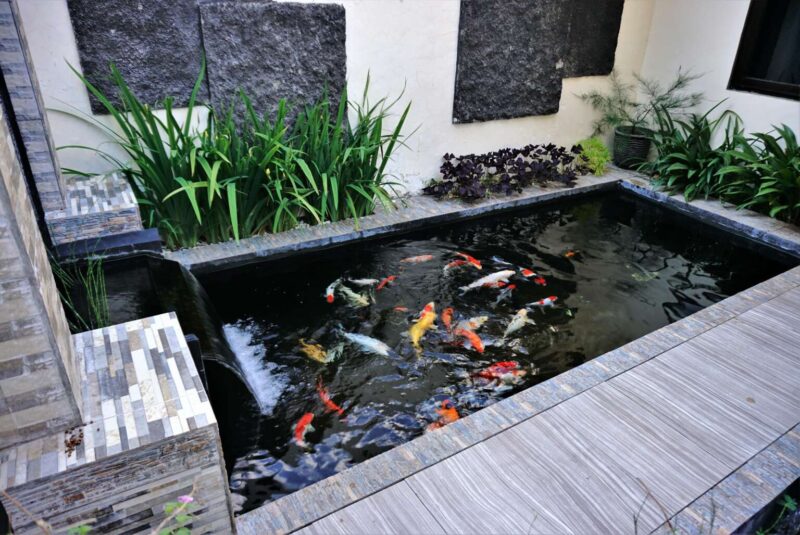
Cleaning is the foundation of maintenance. It removes leaves, dirt, and organic debris that clog filters or decompose, releasing harmful nutrients into the water. Over time, these nutrients lead to murky water and algae outbreaks.
Practical Examples:
- Small ponds: Use a skimmer net to remove leaves and surface debris daily.
- Larger ponds: Invest in a pond vacuum to clean sediment from the bottom.
- Persistent debris: Install a surface skimmer that automatically collects floating materials.
Pro Tip:
Clean your pond twice a year—once in spring to prepare for warmer months and again in fall to remove debris before winter.
For more complex situations, a pond specialist can address persistent issues like sludge buildup or faulty filtration systems.
Balance Plant Life
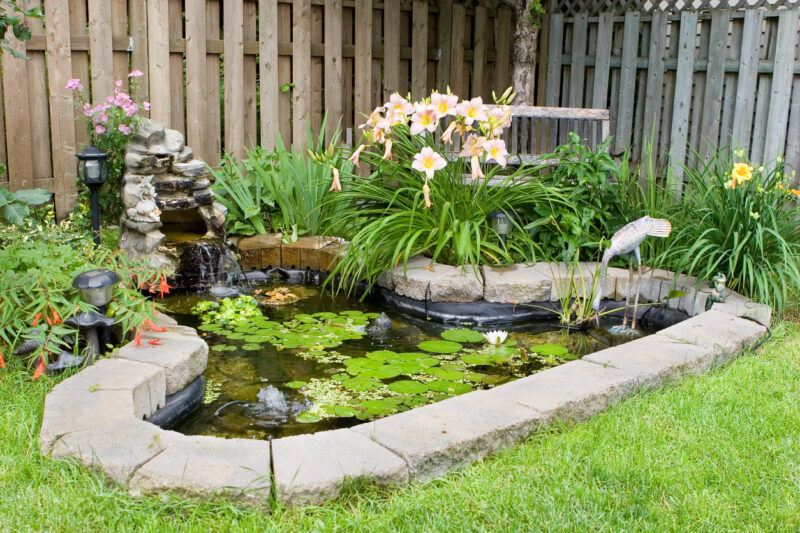
Plants are the unsung heroes of pond ecosystems. They absorb excess nutrients, oxygenate water, and create habitats for fish and beneficial insects. But too many plants can create problems, blocking sunlight and reducing oxygen.
Key Benefits of Plants:
- Water clarity: Plants like anacharis absorb nutrients that would otherwise feed algae.
- Temperature control: Floating plants reduce water temperature by providing shade.
- Oxygenation: Submerged plants improve oxygen levels for fish and beneficial bacteria.
Recommendations:
- Add marginal plants like cattails to edges for aesthetics and erosion control.
- Use floating plants like duckweed sparingly—they grow fast and need trimming.
- Introduce a mix of submerged and surface plants to balance nutrient levels.
Optimize Your Filtration System
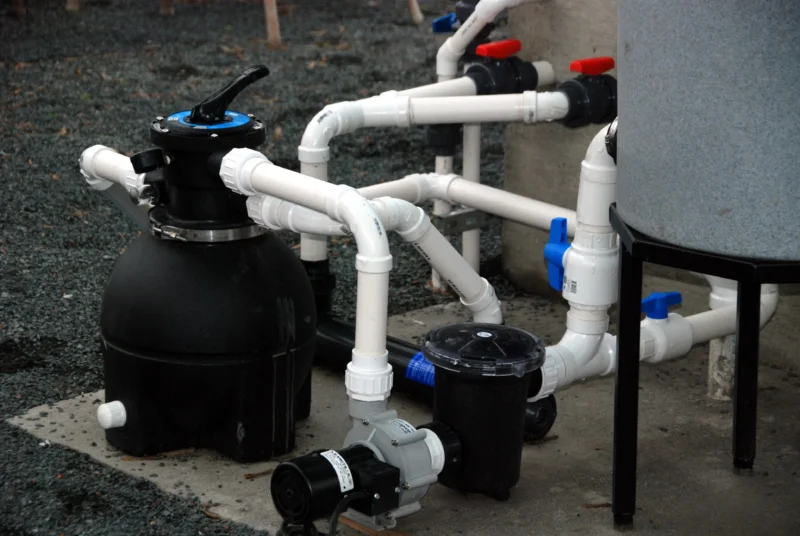
Filtration systems are critical for maintaining water quality. They remove impurities, keep water circulating, and prevent stagnation. Choosing the right filter depends on your pond’s size and fish population.
Types of Filters:
- Mechanical filters: Remove solid debris like leaves and algae.
- Biological filters: Support beneficial bacteria that break down harmful waste.
- UV clarifiers: Target microscopic algae, ensuring crystal-clear water.
Pro Tips for Filtration:
- Check your filter weekly for clogs or damage.
- Upgrade to a higher-capacity system if your fish load increases.
- Use a combination of mechanical and biological filters for optimal results.
Avoid Overfeeding Fish
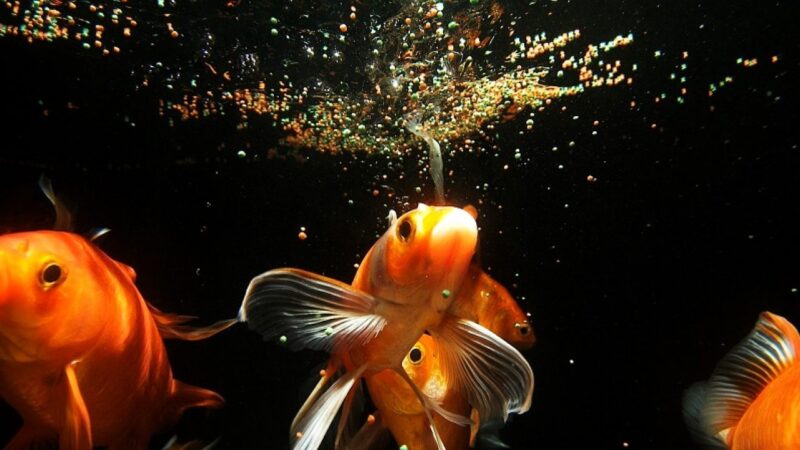
Fish are a delight to watch but can quickly upset your pond’s balance if overfed. Uneaten food decomposes, leading to nutrient spikes that encourage algae growth and harm water quality.
Steps to Feed Responsibly:
- Feed fish no more than they can consume in two minutes.
- Skip feeding during colder months when fish metabolisms slow.
- Use high-quality, easily digestible food to reduce waste.
Monitor Water Quality
Regular water testing is like a health checkup for your pond. It helps you identify problems such as high ammonia levels or imbalanced pH before they harm aquatic life. While testing is crucial, adding a pond aerator can elevate your water quality maintenance. A pond aerator can keep the water moving, preventing stagnation and ensuring oxygen is distributed evenly. This can not only support fish and plants but also encourage the growth of beneficial bacteria that keep your pond thriving.
Recommended Testing Schedule:
- Weekly in summer, when conditions change rapidly.
- Monthly in winter, when activity slows.
What to Test For:
- pH: Ideal levels range between 6.5 and 8.5.
- Ammonia and nitrates: High levels indicate waste buildup.
- Oxygen: Ensure adequate aeration for fish and plants.
If levels fall outside the recommended ranges, act immediately. Use water treatments or partial water changes to restore balance.
Combat Algae Naturally
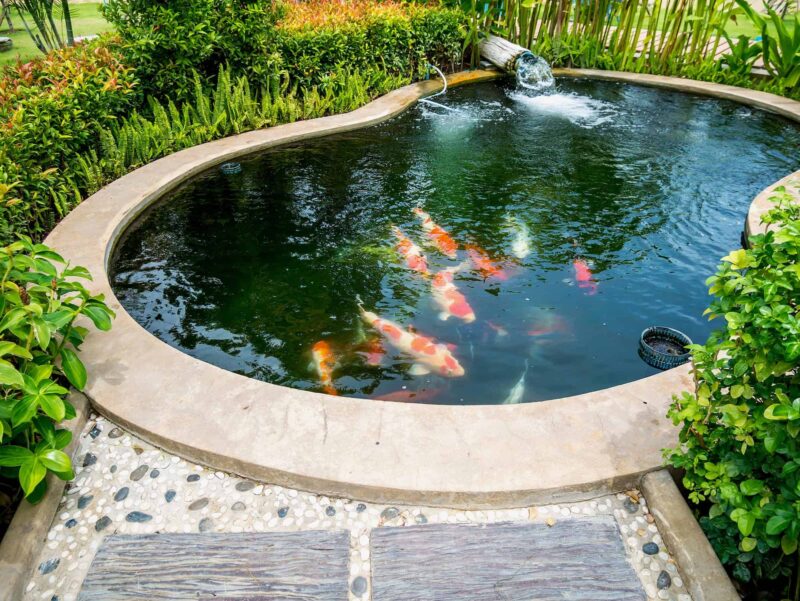
Algae can overrun a pond if left unchecked. They thrive in sunlight and nutrient-rich environments. Preventing algae doesn’t always require chemicals; natural methods are often just as effective.
Natural Algae Control Methods:
- Add barley straw bales to the water. As they decompose, they release compounds that inhibit algae growth.
- Install shading plants like water lilies to block sunlight.
- Use a fountain or aerator to disrupt algae’s ability to settle on the water surface.
Benefits of Avoiding Chemicals:
- Keeps fish and plants safe from toxins.
- Supports beneficial bacteria needed for a balanced ecosystem.
- Reduces long-term costs compared to repeated chemical treatments.
Winter Preparation
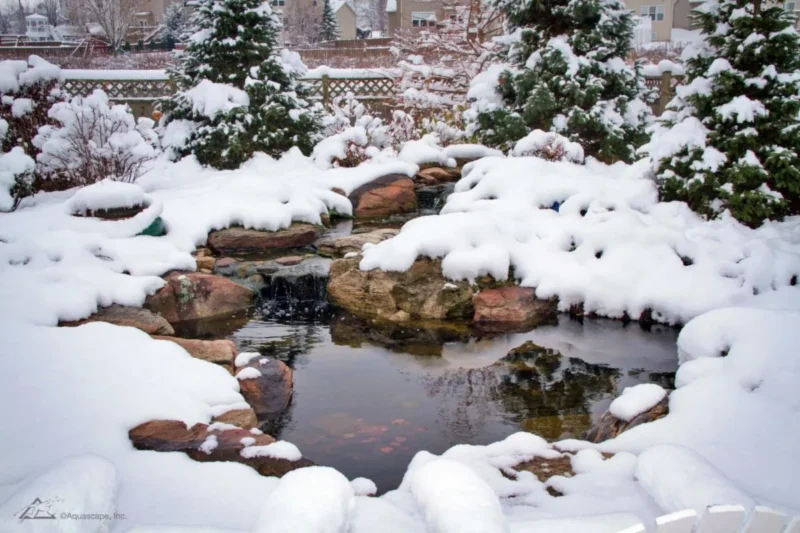
Winter poses unique challenges. Ice can reduce oxygen levels, and decaying debris creates harmful gases. Preparing your pond for colder months ensures it stays in good condition.
Steps for Winter Care:
- Remove delicate plants like tropical lilies and store them indoors.
- Install a de-icer or pond heater to maintain an oxygen exchange area.
- Reduce fish feeding as their metabolism slows in colder water.
Pro Tip:
Cover the pond with a net to keep out falling leaves. This reduces cleaning and prevents nutrient buildup from decaying plant matter.
Common FAQs About Pond Maintenance
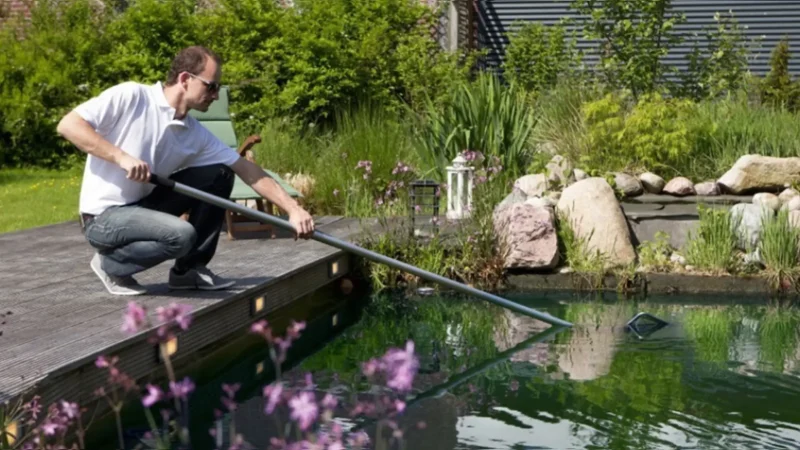
How often should I clean my pond?
Light cleaning weekly, with deep cleaning twice yearly, is recommended.
Can I use tap water in my pond?
Yes, but always treat tap water with a dechlorinator before adding it to the pond.
Why is my pond water cloudy?
Cloudiness often comes from debris, excess algae, or inefficient filtration.
How do I prevent algae blooms?
Control sunlight exposure, use grow room controller, avoid overfeeding fish, and add nutrient-absorbing plants.
Should I add salt to my pond?
Yes, but use it sparingly. Salt supports fish health and controls parasites but may harm plants in high concentrations.
Can fish survive winter in a pond?
Most fish species can survive if the pond is deep enough and a de-icer keeps oxygen flowing.
Conclusion
Maintaining a pond requires consistent effort but rewards you with a stunning, balanced environment. Regular cleaning, thoughtful plant care, and vigilant water monitoring keep your pond thriving. Adding professional guidance, like consulting a pond specialist, ensures any challenges are addressed effectively. With these practices, your pond will stay a vibrant haven for fish, plants, and anyone lucky enough to enjoy its beauty.
Related Posts:
- Seasonal Pond Care - Essential Tips for Year-Round…
- The Role of Massage in a Healthy Lifestyle - How It…
- How To Care for Your Face Skin ─ A Beginner’s Guide…
- What are the 5 Keys to UPS System Maintenance
- Essential Tips for Physicians to Manage Medical…
- How Do I Prolong My SD Card Life? Essential Tips and Tricks

